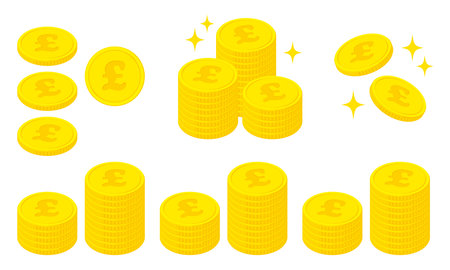Introduction to Indian Numismatics and Philately
India, a land of timeless traditions and vibrant cultures, has always celebrated its history through unique art forms and artefacts. Among these, the collecting of coins (numismatics) and stamps (philately) stands out as a cherished pursuit that connects generations and preserves our shared heritage. Both hobbies are more than simple pastimes—they serve as living records of India’s economic evolution, political milestones, and social changes. From ancient punch-marked coins of the Mahajanapadas to the colourful stamps commemorating independence or landmark events, every piece tells a story embedded in our collective memory. As collectors across Bharat build their treasured collections, they nurture not just personal passion but also contribute to documenting and safeguarding India’s cultural legacy for future generations. In this article, we embark on an exploration of Indian numismatics and philately, delving into their historical significance, intrinsic value, and promising future in the modern era.
Historical Significance: Tracing India’s Legacy
India’s history is a vibrant tapestry woven with diverse cultures, dynasties, and events, and this richness is beautifully reflected in its coins and stamps. Both numismatics (coin collecting) and philately (stamp collecting) offer a unique window into the subcontinent’s evolution—serving not just as collectibles but as historical artefacts that narrate stories of power, trade, art, and identity.
Coins: Chronicles in Metal
Indian coinage dates back to the 6th century BCE with punch-marked coins from the Mahajanapadas era. Over centuries, successive empires like the Mauryas, Guptas, Mughals, Marathas, and British Raj left their imprint on Indian currency. Each coin captures the essence of its period—depicting rulers’ portraits, religious symbols (like the lotus or Nandi bull), inscriptions in various scripts, and even shifts in metal usage reflecting economic conditions. Post-independence coins mirror India’s modern aspirations with motifs such as the Lion Capital of Ashoka or themes like agriculture and technology.
| Era/Dynasty | Notable Coin Features | Cultural Significance |
|---|---|---|
| Mauryan Empire | Punch-marked symbols | Early trade & governance |
| Mughal Empire | Calligraphy & Emperors portrait | Artistic heritage & Islamic influence |
| British Raj | Crown & monarch profiles | Colonial rule & transition to modernity |
| Post-Independence India | Ashoka Pillar, national symbols | Sovereignty & unity in diversity |
Stamps: Miniature Messengers of Culture
The first Indian postage stamp—the Scinde Dawk—was issued in 1852. Since then, Indian stamps have chronicled political milestones, celebrated festivals (like Diwali and Eid), showcased traditional arts (Madhubani paintings, Kathakali dance), and honoured national heroes from Mahatma Gandhi to Rani Lakshmi Bai. Stamps serve as miniature ambassadors of India’s pluralistic ethos and progressive journey across decades.
| Theme/Period | Stamp Subjects | Cultural Reflection |
|---|---|---|
| Pre-Independence | British monarchs, colonial icons | Imperial legacy & postal development |
| Post-Independence (1947 onwards) | Freedom fighters, cultural festivals, wildlife | Pride in heritage & diversity |
| Thematic Issues (Modern Era) | Science achievements, sports icons, yoga | Emerging India & global recognition |
The Enduring Appeal for Collectors Across Bharat
The historical significance of Indian coins and stamps goes beyond monetary value; it evokes nostalgia and national pride among collectors from all walks of life—from school students in Delhi to hobbyists in Chennai. These collectibles are not only prized possessions but also valuable resources for understanding how India has evolved—politically, socially, and artistically—over millennia.

3. Popular Indian Coins & Stamps: What Collectors Seek
Indian numismatics and philately are enriched by a dazzling array of coins and stamps, many of which have attained legendary status among collectors. For those passionate about collecting, certain iconic pieces stand out for their historical significance, rarity, and connection to India’s diverse heritage.
Iconic Coins: From Ancient Dynasties to Modern India
Among coins, ancient punch-marked coins from the Mahajanapadas period (6th century BCE) are highly prized for their age and distinctive symbols. Mughal-era gold Mohurs and silver Rupees, especially those issued under emperors like Akbar or Aurangzeb, remain coveted for their exquisite calligraphy and minting artistry. In the colonial period, coins minted under British rule, such as Queen Victoria’s silver Rupee or the King George VI series, are sought after by collectors for both nostalgia and investment value. Post-independence, commemorative coins featuring events like Mahatma Gandhi’s birth centenary or the Asian Games reflect modern India’s journey and are increasingly popular among young collectors.
Regional Varieties: Capturing Bharat’s Spirit
Bharat’s regional diversity is vividly represented in its coinage. Coins from princely states—like Hyderabad’s copper paisa or Travancore’s chakram—offer a glimpse into local histories and cultures. South Indian Chola or Vijayanagara empire coins bear Dravidian scripts and motifs unique to the region. Collectors in Maharashtra often cherish Maratha coins, while those from Bengal seek Nawab-era issues. Each piece narrates the story of its land and people, making regional varieties a cornerstone of any serious collection.
Stamps: Celebrating India’s Unity in Diversity
India’s first postage stamp, the 1854 “Scinde Dawk,” is legendary for its rarity and marks the dawn of Indian philately. The “Inverted Head Four Annas” is another world-famous error cherished by advanced collectors. Post-independence stamps celebrating themes like Rabindranath Tagore, ISRO achievements, or festivals such as Diwali and Pongal highlight India’s rich cultural fabric. Regional issues in vernacular languages or with indigenous art forms—like Warli paintings from Maharashtra or Madhubani from Bihar—are especially valued for capturing local ethos.
The Collector’s Perspective: Heritage Meets Aspiration
For Indian collectors, these coins and stamps are more than investments—they are tangible links to Bharat’s multifaceted past and present. Whether it is the thrill of finding a rare Mughal coin at a Chandni Chowk market or acquiring a limited-edition stamp released during Independence Day celebrations, each acquisition adds a chapter to one’s personal heritage narrative. As more Indians embrace this passion with pride, the community continues to grow, weaving together tradition, value, and future prospects in the vibrant world of collecting.
4. Value, Authentication & Preservation Tips
For Indian collectors, understanding the value and authenticity of coins and stamps is crucial for building a meaningful collection. With India’s vast history and diverse issues, both novice and seasoned collectors must approach valuation, authentication, and preservation with careful attention to local factors.
Guidance on Identifying Genuine Items
Fake and replica items are common in the Indian collectibles market. To ensure your items are genuine:
- Examine Details: Check for sharpness of inscriptions, correct weight, metal composition (for coins), watermarks, perforations, and printing techniques (for stamps).
- Reference Catalogues: Use authoritative catalogues like the “Stanley Gibbons” for stamps or “The Standard Catalogue of Indian Coins” for coins to compare features.
- Seek Expert Opinion: Consult reputable dealers or numismatic societies such as the Philatelic Congress of India or the Numismatic Society of India.
- Provenance: Documentation or provenance increases trustworthiness and future value.
Understanding Market Value in India
The worth of Indian coins and stamps depends on rarity, demand, condition (grade), historical significance, and sometimes errors or misprints. Below is a simplified table showing how these factors can impact value locally:
| Factor | High Impact Example | Market Value Effect |
|---|---|---|
| Rarity | 1857 East India Company Rupee | Very High |
| Condition/Grade | Uncirculated vs. Circulated Coin | Doubles or More |
| Historical Significance | First Independence Stamp (1947) | High Demand Premium |
| Error/Misprint | Inverted Head 4 Annas Stamp | Auction-Level Premiums |
| Cultural Theme | Mahatma Gandhi Series Stamp | Sustained Popularity in India |
Preservation Amidst Indian Climate & Conditions
The Indian subcontinent presents challenges such as high humidity, temperature fluctuations, dust, and pollution that can degrade collectibles. Here are some tips tailored for Indian collectors:
- Avoid Direct Sunlight: Store items away from sunlight to prevent fading and discoloration.
- Control Humidity: Use silica gel packets in storage boxes; keep items in a cool, dry place.
- Acid-Free Materials: Use acid-free albums, holders, and envelopes for storing stamps and coins to prevent chemical reactions.
- No Bare Hands: Always handle with clean cotton gloves—natural skin oils can damage surfaces over time.
- Pest Prevention: Regularly check for pests like silverfish that can attack paper-based collectibles.
- Semi-Annual Checks: Inspect your collection every six months for signs of corrosion, mildew, or other damage.
The Long-Term Perspective: Building Value Over Time
A disciplined approach—combining authentication skills, market awareness, and diligent preservation—ensures your Indian coin and stamp collection not only retains its cultural significance but also appreciates in value across generations. In this way, you become both a guardian of heritage and a savvy investor in the growing world of Indian collectibles.
5. Community & Collectors: The Indian Scene Today
Indias passion for collecting coins and stamps is deeply rooted in its diverse heritage, and today’s collectors have a thriving ecosystem to support their pursuits. The modern Indian numismatic and philatelic community is both vibrant and welcoming, offering many avenues for enthusiasts of all ages and backgrounds.
Numismatic Societies & Philatelic Clubs
Across the country, city-based numismatic societies and philatelic clubs play a pivotal role in nurturing this hobby. Organisations such as the Numismatic Society of India (NSI), the Philatelic Congress of India (PCI), and various state-level associations regularly host meetings, workshops, and exhibitions. These platforms are perfect for knowledge sharing, authenticating rare finds, and networking with veteran collectors. Many schools also run philately clubs under the guidance of India Post, encouraging students to appreciate the value of stamps beyond mere postage.
Online Communities: OLX, WhatsApp & Beyond
The digital era has transformed how collectors connect. Platforms like OLX have become popular for buying, selling, and exchanging rare coins and stamps. WhatsApp groups are thriving spaces where members share updates on new releases from RBI or India Post, discuss market trends, and even arrange private trades. Social media pages on Facebook and Instagram further boost engagement, allowing young urban Indians to showcase their collections and interact with experts nationwide.
Major Indian Exhibitions
Annual events such as INPEX (Indian National Philatelic Exhibition), state-level coin fairs in Mumbai or Kolkata, and heritage auctions draw crowds from all corners of India. These exhibitions not only display unique pieces from princely states or colonial times but also offer seminars on authentication and investment potential. They serve as melting pots for experienced dealers, casual hobbyists, and budding collectors alike.
A Growing Sense of Belonging
Today’s Indian collector enjoys a strong sense of community—whether meeting over chai at a local club or trading stories online. This collective enthusiasm ensures that numismatics and philately remain more than hobbies; they are living traditions bridging generations and celebrating Indias rich legacy in everyday life.
6. Long-Term Prospects: Investing in Indian Heritage
As we look towards the future, coin and stamp collecting in India is poised for a resurgence, driven by both cultural pride and financial foresight. The growing interest among young Indians, especially with the rise of online communities and digital marketplaces, has made access to rare coins and stamps more democratic than ever before. At the same time, the Indian government’s initiatives to preserve numismatic and philatelic heritage—such as special exhibitions at museums like RBI Monetary Museum and India Post’s Philately Bureaus—have ignited a renewed appreciation for our rich legacy.
Emerging Trends in Collecting
The trend is shifting from mere accumulation to purposeful collecting, where enthusiasts focus on themes such as Mahatma Gandhi issues, princely state coins, or stamps commemorating significant national events. This thematic approach not only enhances the educational value but also increases the potential for long-term appreciation. Digital catalogues and authentication services are improving transparency and trust within the community, making it easier for collectors to identify genuine pieces and track market values.
Potential Growth & Diversification
India’s expanding middle class, increasing disposable income, and rising awareness of alternative investments are fueling growth in this niche segment. Unlike stocks or gold, coins and stamps offer tangible connections to history—each item narrates a story from ancient dynasties to modern independence. As global interest in Indian heritage grows, particularly among NRIs (Non-Resident Indians), demand for rare collectibles is expected to rise steadily. This makes Indian coins and stamps a promising avenue not just for hobbyists but also for investors seeking portfolio diversification away from traditional assets.
Safeguarding Heritage and Value
By investing in these collectibles, you are not just acquiring artifacts; you are actively participating in safeguarding India’s unique heritage. Over time, well-maintained collections can deliver substantial returns, both financially and emotionally. As experts always say—provenance, rarity, and condition will remain key drivers of value. Savvy collectors who adopt a long-term perspective, focusing on quality over quantity, stand to benefit most as the market matures.
In essence, collecting Indian coins and stamps offers more than nostalgia—it is a celebration of our nation’s journey and an intelligent step towards investment diversification. With growing awareness and institutional support, the future of this timeless pursuit looks brighter than ever for every Bharatiya numismatist and philatelist.


